Dear Readers, Vitamin E is one of the nutrients your body needs to survive. But why is the “cell protection” vitamin so important? Below you will find out everything about vitamin E benefits, from its effects to the biggest risks to the best foods to cover your daily requirements.
What vitamin E actually is
The substances called vitamin E are vitamins in the classic sense. Although the body is dependent on them, it cannot produce them itself. Vitamin E benefits must therefore be supplied to the body from outside, for example through food intake.
Although, like them, it is a fat-soluble vitamin, vitamin E benefits differ from its relatives vitamin A and vitamin D. Because these can at least to a certain extent be produced by the human body itself.
Fat-soluble vitamins such as vitamin E benefits are characterized by the fact that, unlike water-soluble vitamins, they can be stored by the body. This allows your organism to build up reserves of the vitamin that it can draw on in bad times.
Effects of Vitamin E
When vitamin E was discovered almost 100 years ago, it was primarily considered a “fertility vitamin”.
Although this is not unfounded, we now know that the vitamin has a much greater influence on other areas of the body.
Cell protection
No other vitamin fulfills such an important function in protecting cells as vitamin E. It has a highly anti-oxidative effect.
This means that vitamin E protects the body’s cells from destruction, premature aging, and decay. More specifically, it effectively fights the so-called free radicals that are responsible for such cell damage.
Free radicals are chemical compounds that arise primarily as by-products of normal metabolic processes. However, they can also be formed when your body processes UV light or cigarette smoke.
In unprotected cells, free radicals can damage important molecules, including DNA and cell components such as lipids and proteins. Vitamin E benefits prevent this and thus protect the body from secondary diseases that result from cell damage, such as cancer.
Anti-inflammatories
Thanks to its anti-oxidant effect, vitamin E not only actively protects your body’s cells, it also has an anti-inflammatory effect. Free radicals are released particularly during inflammatory processes in the body.
This puts even more strain on your already damaged organism.
By counteracting free radicals, vitamin E not only prevents them from further intensifying inflammatory processes.
It also alleviates the course of the inflammatory processes themselves. Tocopherols and the other antioxidant substances of the vitamin E group therefore have a positive influence on long-term inflammatory diseases such as osteoarthritis, so that the course of the disease and symptoms are alleviated.
Since it fights inflammation, vitamin E benefits, like vitamin C, helps to strengthen the immune system.
Skin
As a fat-soluble vitamin, vitamin E can be easily absorbed by the skin, which is why the cosmetics industry uses it in numerous creams and ointments. The economy also benefits from the anti-oxidative effect of the nutrient.
Harmful chemical compounds such as free radicals also accelerate cell aging by attacking proteins and lipids in the cells. This also affects the skin cells.
By neutralizing free radicals, vitamin E leaves the lipid layers of the skin cells untouched and can form an effective barrier not only against pathogens but also against other substances that irritate and stress the skin.
Because lipids also provide your cells with moisture, vitamin E benefits also ensure that your skin cells remain firm and supple.
Fertility
The effects of vitamin E on fertility are very controversial. So far, studies have not found any clear benefits.
However, the vitamin has been proven to have functions in the control of the human gonads. Organs in which germ cells are formed are called gonads; in humans, these are testicles and ovaries.
Because of this control function, vitamin E is definitely used in the treatment of couples with an unfulfilled desire to have children.
In this respect, it is certainly worthwhile for those affected to speak to a doctor to discuss the benefits and use of vitamin E benefits to support other therapy options.
Preservation
It has already been emphasized several times that vitamin E protects cells from decay and aging. But it’s not just your organism that benefits from the vitamin. Vitamin E benefits is not only added to cosmetics to improve their effectiveness, it also promotes the shelf life of the products themselves.
The food industry has also taken advantage of this advantage and adds vitamins to cooking fats, dressings, and desserts, among other things, to make them last longer.
Risks of vitamin E due to overdose and deficiency
Vitamin E is an essential nutrient that your body absolutely needs to function.
Nevertheless, there are also some risks associated with the vitamin.
These basically come about as a result of two different scenarios: firstly, a vitamin E deficiency, and secondly, a vitamin E overdose.
Under these conditions, a deficiency can arise either as a result of a long-term low-fat diet or as a consequence of an absorption disorder – often due to illness – which prevents the vitamin from being transferred from food into the organism via the digestive tract.
Like most vitamin deficiencies, an undersupply of vitamin E only becomes noticeable after a long time, when the body’s last reserves of the nutrient have been used up. A vitamin E deficiency occurs when there are less than five milligrams of tocopherol per liter of blood.
An overdose usually results from taking high-dose vitamin preparations, which is why they should only be used in consultation with a doctor. However, as part of normal eating habits, it is almost impossible to overdose on vitamin E.
Below you will find out everything about the biggest risks that both a deficiency and an overdose of vitamin E can entail.
Muscle and nerve disorders
Disorders of the muscular system and nerve stimuli are typical consequences of a vitamin E deficiency. If there is a severe undersupply, muscles and nerves will break down.
This can lead to involuntary shaking (tremor), muscle weakness, and slowing of reflexes. Movement disorders and reduced sensitivity can also result from the deficiency.
In some cases, these physical signs of decline are accompanied by a decline in cognitive abilities – fatigue, long reaction times, and reduced ability to concentrate and perform.
Increased risk of cancer
Several medical studies have examined the effect of vitamin E benefits on cancer. The studies did not produce a clear result, but some of the studies suggest that an overdose of the vitamin promotes tumor diseases.
This has been observed in relation to both lung and prostate cancer. However, an overdose that reaches such damaging proportions only occurs through excessive consumption of concentrated vitamin E preparations.
Increased risk of bleeding
A severe overdose of vitamin E can also have other unpleasant effects. People who suffer from a blood clotting disorder are particularly at risk. In the case of such a clinical picture, medications that inhibit blood clotting are usually prescribed.
However, in very high doses, vitamin E influences vitamin K, which is responsible for blood clotting. As a consequence, blood clotting is inhibited more than desired, and the result is an increased tendency to bleed.
Anyone who already has a high tendency to bleed should be particularly careful when taking vitamin E benefits supplements.
The daily requirement of vitamin E
If you are worried about your vitamin levels or have any questions, you should definitely contact a doctor and have a blood test done. This means you can discuss with your doctor individually how much of the nutrient you need and what your current values look like.
Pregnant and breastfeeding women should always consult a doctor to ensure optimal nutrient supply for themselves and their children.
As a basis, the DGE recommends a daily dose of 11 to 12 milligrams of vitamin D for women. Men have a slightly higher value of 12 to 15 milligrams.
Pregnant women should consume at least 13 milligrams of the vitamin per day; according to the DGE, breastfeeding women have the highest need of 17 milligrams.
Adolescents also have a fairly high requirement of 13 to 15 milligrams; children need different amounts of the nutrient during the growth phase depending on their age.
Foods with vitamin E
For healthy people, the daily need for vitamin E can easily be covered through diet.
Since the vitamin is found in both animal and plant foods, vegetarians and vegans do not have to go without the valuable nutrients.
However, you should note that vitamin E benefits are primarily found in fatty foods.
Fat-soluble vitamins must always be consumed in conjunction with fat, otherwise, your body cannot absorb them. So if you’re on a lightning diet and want to lose weight as quickly as possible, you should think about your vitamin balance.
If you want to lose weight healthily and eat a balanced diet, you shouldn’t permanently avoid natural fats anyway. Below you will find x healthy and delicious foods that you can easily integrate into your daily menu.
Hazelnuts
Hazelnuts are a solid plant-based source of vitamin E. 40 grams of hazelnuts cover your daily requirement with 10.5 milligrams of vitamin E and also contain numerous minerals such as magnesium, zinc, calcium, phosphorus, and iron.
Olive oil
In addition to nuts, vegetable oils are the most effective suppliers of the “radical catcher” vitamin E. Olive oil is suitable for cooking, frying, and dressing salads and contains between 45 and 80 milligrams of vitamin per 100 grams.
Sunflower oil
Sunflower oil is also rich in valuable nutrients with around 60 milligrams of vitamin E per 100 grams. However, when it comes to other ingredients, the popular frying oil lags behind olive and rapeseed oil.
Almonds
With around 10.4 milligrams of vitamin E, 40 grams of almonds are hardly inferior to hazelnuts in terms of their vitamin content. Thanks to potassium, magnesium, phosphorus, sodium, and vitamin B, almonds are also a healthy snack in every respect.
Wheat germ oil
This oil is less well known than other vegetable oils, but as a source of vitamin E, it is invaluable. Wheat germ oil contains so much vitamin E that you can easily meet your daily requirement with a single tablespoon (approximately 10 grams).
Salmon
Fatty sea fish is an animal source of vitamin E. 150 grams of salmon contains a little more than 3 milligrams of vitamin E. A small salad with nuts or vegetable oil and your daily requirement is covered.
Linseed
The small seeds have long been considered a superfood. 100 grams of flaxseeds contain around 16 milligrams of vitamin E – so you can cover your daily requirements with morning yogurt, with a few slices of bread, or in homemade muesli.
sweet potatoes
Just 100 grams of the yellow-orange vegetable contains around 4.6 grams of vitamin E. If you prepare the sweet potatoes in conjunction with one of the oils mentioned, you will quickly have your daily dose of the vitamin on your plate.
Sweet potatoes also contain a lot of beta-carotene, i.e. provitamin A, from which your body can also produce vital vitamin A when needed.
Fruit
Different types of fruit each contain smaller amounts of the cell protection vitamin. 100 grams of blackcurrants contain 2 milligrams of vitamin E.
An avocado has the same amount of nutrients. 250 grams of mango (which usually corresponds to one fruit) have between 2 and 3 milligrams of vitamin E. Pomegranates also have the nutrient.
This means you have a selection of healthy, vitamin-rich snack options, especially in summer but also in winter.
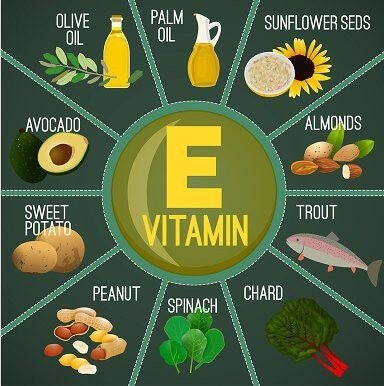
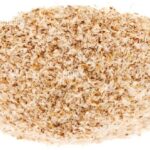

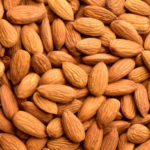

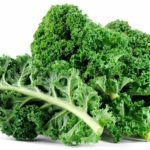

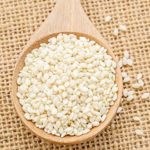





Leave a Reply